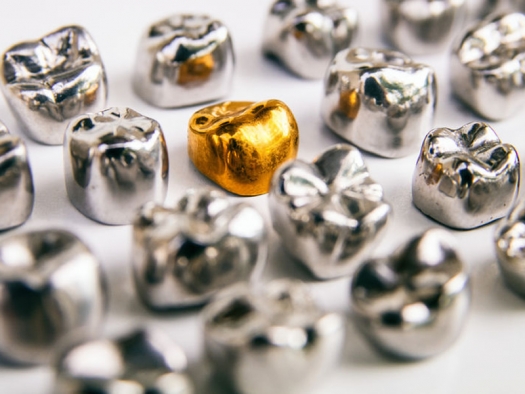TeethSilverGold.jpg

Photo by Mykhailo Sapryhin / 123rf.com
That’s a strange question to ask or is it? Did you know that most metals found in your mouth have the ability to create an electrical charge? This charge can be responsible for numerous side effects that are rarely associated with the dental work found in your mouth.
Galvanic current is a term that has been used in dentistry for over 100 years. It is a condition created by the presence of dissimilar metals in the oral cavity of the teeth and gums, with saliva serving as the electrolyte. Have you ever felt a “shock” to your teeth caused by a piece of tin foil or a spoon that touches a sliver or mercury filling in your mouth? If you answer yes to this question, you’ve experienced a galvanic event.
There are several different types of galvanism:
- A silver/mercury filling is placed in opposition or adjacent to a tooth restored with gold. These dissimilar metals in conjunction with saliva and body fluids constitute an electric cell. When brought into contact, the circuit is shorted, the flow of electrical current passes through the pulp, and the patient experiences pain.
- Dissimilar metals coming into contact when the upper and lower teeth come together and touch each other.
- Two adjacent teeth are restored with dissimilar metals. The current flows from metal to metal through the dentine, bone and tissue fluids of both teeth resulting in discomfort and tooth sensitivity.
We learned about the galvanic current in dental school. We’ve read about it in dental journals. However, how often do dentists follow the protocols that are necessary to avoid this condition from occurring? The dental profession needs to be more aware of the negative effects that are caused by galvanic currents and be committed to prevent the unwanted, and often harmful, electrical charges or imbalances from occurring.
Other than tooth sensitivity, galvanism can cause a metallic or salty taste in the mouth, increase salivary secretion, and burning or tingling sensation of the tongue. Other systemic complications may include headaches, chronic fatigue, memory loss, sleep deprivation and even irritability due to its effects to the central nervous system.
If these symptoms sound familiar or if you’ve had four or five different dentists caring for your dental needs over the years, chances are much greater that there are several dissimilar metals to be found in your mouth.
The brain operates on seven to nine nano-amps which is 1,000 times weaker than the currents resulting from non-precious metals found in the oral cavity. That is the difference between touching a 9 volt battery and sticking your finger in the light socket as far as the brain is concerned. Since the upper teeth are less than two inches from the brain, it is of concern that adding this much excess electrical activity has the potential of creating misdirected impulses in the brain.
How can you tell if you have a galvanic current occurring in your mouth? The good news is that it can be measured. An electrical potential meter known as the Rita Meter can be used to measure electrical charges on fillings, crowns and metallic appliances. (Normal readings range from +2/-2 micro-amps.)
Healthy gold crowns or composite resins (tooth colored fillings) most often register a positive charge. When they register a negative charge greater than -2, it usually indicates either decay under an old filling or there’s an amalgam/mercury filling under a crown.
Metals will not necessarily always cause the galvanic effect in the mouth. It depends on the specific metal and alloy being used along with quantity and placement in the mouth. However, knowing that some of the symptoms listed earlier in this article could be dental related may provide you with an opportunity to evaluate your mouth from a different perspective and discover once and for all if there is a galvanic current present in one or multiple sites in your mouth.
Solution? Remove the offending material(s) connected with that particular tooth or teeth in order to reduce this unwanted electrical charge and create a balanced condition; however, be sure that the offending material is removed safely. To be more specific, the International Academy of Oral Medicine and Toxicology (IAOMT) has utilized scientific research to develop the Safe Mercury Amalgam Removal Technique (SMART).
Biological dentistry views galvanism as an obstacle to achieving overall health and wellness. Keep it simple, keep it safe. A balanced body is a healthy body.


